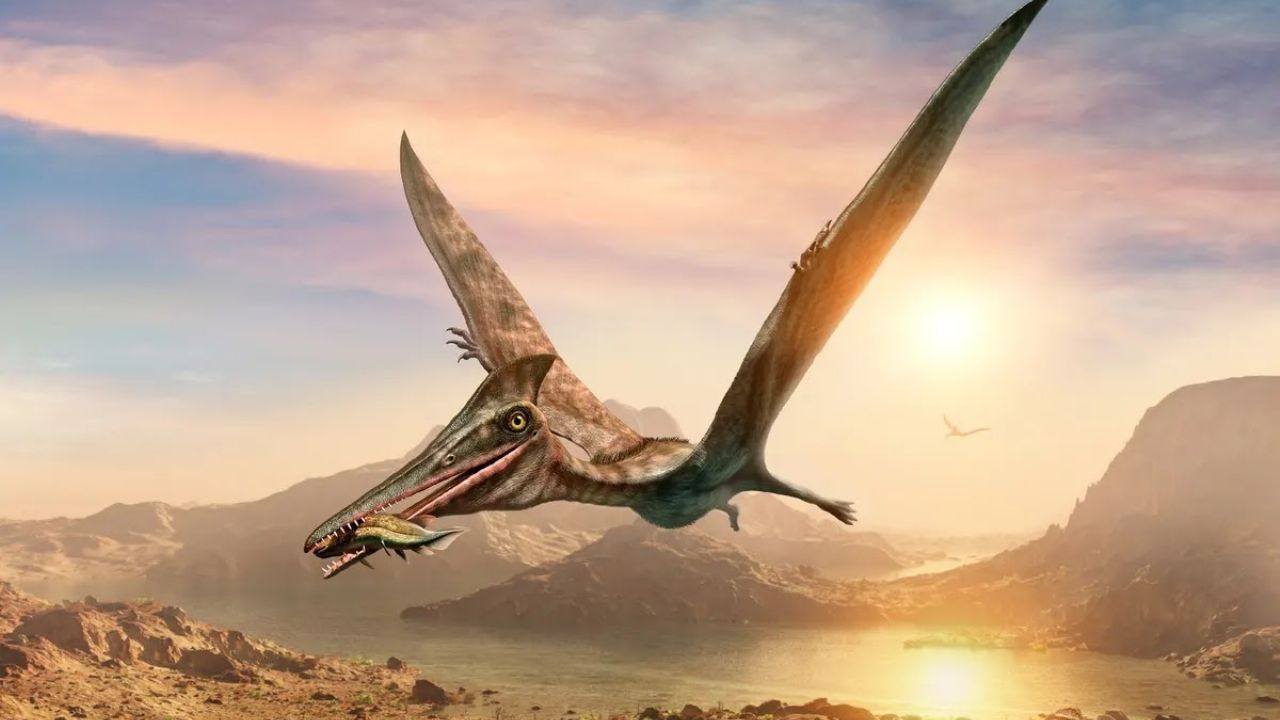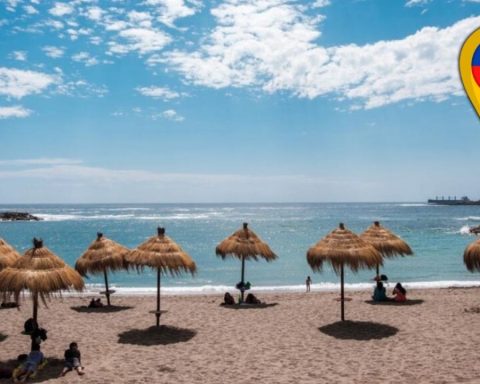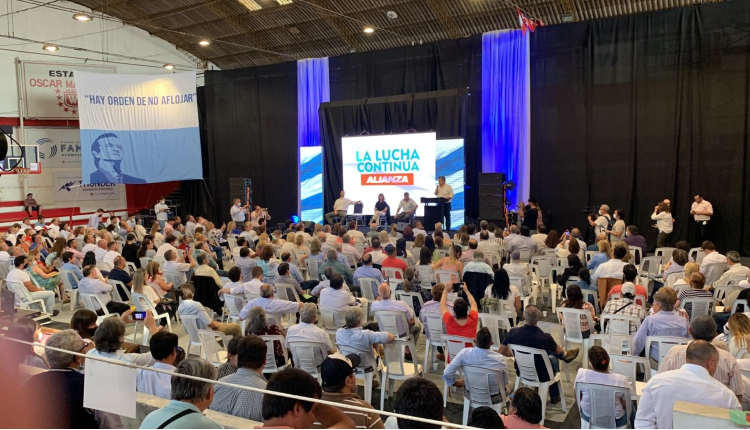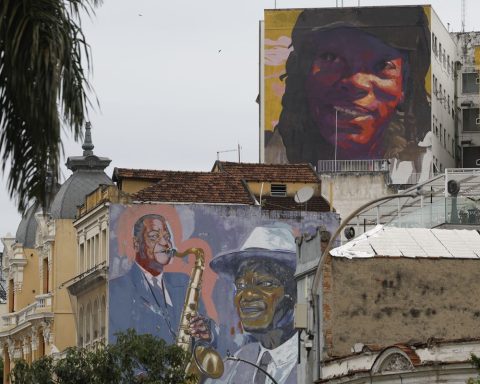Jonathan Alarcona researcher at the Paleontological Network of the University of Chile, led the study of numerous bones extracted from a new fossil site from the age of the dinosaurs in the Atacama Region.
The work, published in the journal Cretaceous Research, revealed the existence of different specimens of pterosaurs from the Ctenochasmatidae family, winged reptiles that would have reached a wingspan of more than three meters.
The finding joins other pterosaurs from the same group found 65 kilometers further south, confirming the widespread presence of these flying dragons in the north of the country.
“Torment Hill””. This name gave a team of scientists from the University of Chile, the National Service of Geology and Mining (Sernageomin), the Andrés Bello University, the National Museum of Natural History (MNHN) and the University of San Luis (Argentina), to a steep mountain of more than 4,300 meters of altitude located 121 kilometers northeast of the city of Copiapó, in the middle of the Atacama Desert.
This remote place was the scene of a paleontological campaign in 2018 that revealed the existence of a true pterosaur cemetery in the area, one of the few in the world.
During this expedition, the researchers extracted various fossil fragments for later study in the Paleontological Network laboratory of the University of Chile, work that allowed these winged reptiles to be identified as belonging to the Ctenochasmatidae family.
The study, published in the journal Cretaceous Research, involved several well-preserved disarticulated bones, including a femur, tibia, humeri and cervical vertebrae.
Jhonatan Alarcón, a researcher at the Faculty of Sciences of the U. de Chile who led this research, explains that these true flying dragons from the age of the dinosaurs were characterized by having elongated necks and snouts, with hundreds of fine and closely spaced teeth that They allowed them to feed by filtering water, similar to how flamingos do.
Regarding these specimens, in particular, it stands out that the size of their bones suggest that they were over 3 meters wide with their wings extended, a characteristic that distinguishes them from another pterosaur of the same family found in Argentina called Pterodaustro guinazui, which reached a wingspan of 2.5 meters.
The paleontologist also details that these pterosaurs lived during the early Cretaceous, between 145 and 100.5 million years ago.

“For now, we do not know the age of these specimens with greater precision, although there are dates in rocks belonging to the Quebrada Monardes Formation (geological unit in which the pterosaur bones were preserved), which outcrop in another locality called the Pulido River, which suggest an age close to 144 million years. Although this dating gives us an idea of the possible antiquity of the pterosaurs that we found in Cerro Tormento, it is necessary to carry out a study of the rocks in which the bones are preserved to have a more exact idea of their antiquity.”, he points out.
One of the main hypotheses of the researchers is the existence of a possible relationship between this pterosaur colony and the records previously discovered in Cerro La Isla, also assigned to the Ctenochasmatidae family, but located 65 km south of Cerro Tormento.
The finding of pterosaurs from the same family in both locations confirms the widespread presence of this group of flying reptiles in what is now northern Chile. For now, he maintains “The only comparable bones between both localities are the cervical vertebrae, which show a similar morphology and proportions”.
“Because of this, we suspect that the pterosaurs from Cerro La Isla and Cerro Tormento could correspond to the same genus or even the same species.” In that sense, he adds, “one of the future challenges is to identify whether the pterosaurs from both locations represent at least one new species, and if they correspond to the same species”.

A cemetery that still keeps many secrets
The first signs of this pterosaur cemetery were discovered in 2013 during a field trip by students of the geology degree at the University of Chile. Edwin González and Hermann Rivas, students at the time, found some loose bones preserved in rock slabs, although they were unable to find the specific site from which they came.
Thus, in 2018, the Paleontological Network of the University of Chile organized an expedition to the site made up of Mario Suárez, Omar Vicencio, Roy Fernández, Edwin González and Jhonatan Alarcón.
“The campaign was difficult, since we had very few days to work, and the slope of the hillsides and the altitude made the tours of the area very exhausting. Practically every 15 to 20 steps we had to stop to rest. We got to the point where they discovered the bones in 2013, but we found nothing. We roamed the area for a couple of hours without finding a single bone. When we already lost hope, literally at the top of the hill, we found a layer of sandstone full of disjointed bones. We collected what we could in the time we had”relates Jhonatan Alarcón, who points out that since then they have not been able to organize new expeditions to Cerro Tormento to continue the extraction of more remains.
In this sense, it stands out that the new deposit “It has undoubted potential for making new pterosaur finds. The bone-preserving layer is quite extensive, and there are a lot of preserved bones left in it, which we hope to collect for years to come.” To explain this abundance of bones, the paleontologist from the University of Chile explains that “it is most likely that some specimens died on the spot or were transported short distances by tidal flows or by river floods.”specifying that it could be a colony that inhabited this estuarine environment due to its safety conditions.
On the other hand, it indicates that so far they have not found evidence of other animals or plants in the area, which they also hope to elucidate in future expeditions.

Finding of world significance
This new area rich in pterosaur fossils from the Cretaceous period represents a discovery of great paleontological relevance, since “Worldwide there are few finds of several individuals of pterosaurs preserved together. In addition, the pterosaur bones from Cerro Tormento are preserved in 3 dimensions, which is unusual, since the bones of these animals are usually preserved broken and crushed because they are very fragile. This gives the opportunity to analyze characteristics that can hardly be observed in crushed specimens”comments Jhonatan Alarcón.
On the other hand, he maintains that the finds of pterosaurs in Chile are scarce, and the majority is represented by incomplete materials. In this way, he emphasizes that “Cerro Tormento provides the opportunity to increase knowledge about the pterosaurs that lived in what is now Chile, and potentially generate international impact studies.” He also adds that “carrying out studies like this is undoubtedly a contribution to understanding the natural heritage of the Atacama Region. We hope that findings like this are incorporated into the identity of that region, and that in turn motivate the general population’s interest in science, especially the youngest.”
















